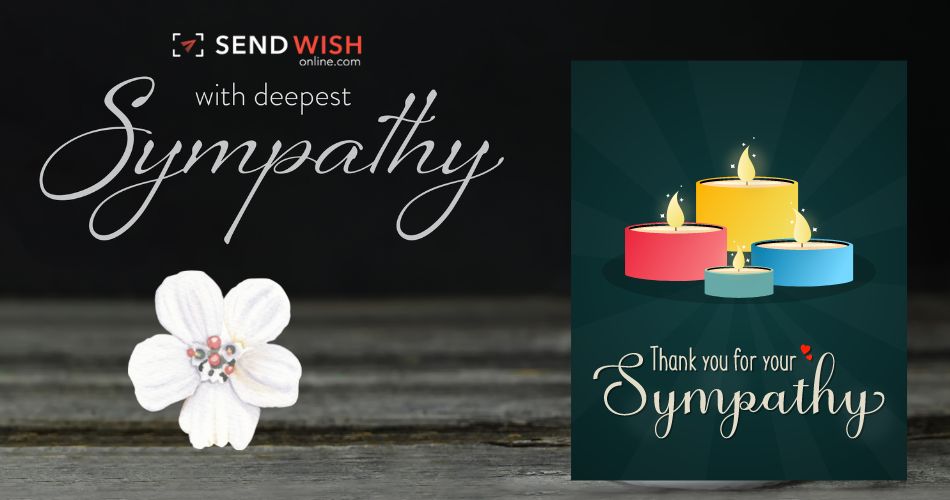Death is a universal experience, but the rituals and traditions surrounding grief and condolences vary across cultures. Condolence cards, while a common expression of support in many societies, take on diverse forms and meanings within different cultural contexts. In this exploration, we unravel the rich tapestry of cultural traditions surrounding condolence cards, delving into how these expressions of sympathy reflect the unique perspectives, beliefs, and values of diverse communities.
1. Western Traditions: Expressive and Personal
In Western cultures, condolences card are deeply ingrained in the tradition of expressing sympathy and offering support to those who are grieving. These cards often feature heartfelt messages, personal anecdotes, and words of comfort. The emphasis is on expressing genuine empathy and offering a personal connection to the bereaved.

“In Western traditions, condolence cards are an extension of the personal touch. They go beyond generic expressions of sympathy, often including personal stories, memories, and heartfelt messages that aim to provide comfort and a sense of shared sorrow.”
2. Asian Cultures: Symbolism and Respect
In many Asian cultures, condolence cards take on a more formal and symbolic role. The emphasis is often on conveying respect for the deceased and their family. The cards may feature traditional symbols, calligraphy, and carefully chosen words that reflect the cultural values of respect, harmony, and a sense of shared community.
“Condolence cards in Asian cultures are a symbolic expression of respect. They often incorporate traditional symbols and calligraphy, emphasizing a sense of cultural unity and respect for the deceased and their family.”
3. Middle Eastern Traditions: Prayers and Blessings
In Middle Eastern cultures, condolence cards often include prayers, verses from religious texts, and blessings for the departed soul. These cards serve not only as expressions of sympathy but also as vehicles for conveying spiritual support. The emphasis is on invoking divine blessings and offering solace through shared faith.
“In Middle Eastern traditions, condolence cards become conduits for spiritual support. Prayers, verses from religious texts, and blessings are common inclusions, providing a sense of comfort grounded in shared faith and a belief in the divine.”
4. African Customs: Communal Mourning
In various African cultures, mourning is often a communal experience, and condolence cards play a role in this collective expression of grief. These cards may feature vibrant colors, symbols of community, and messages that highlight the interconnectedness of individuals within the larger societal fabric.

“Condolence cards in African customs reflect the communal nature of mourning. Vibrant colors, symbols of community, and messages that underscore the interconnectedness of individuals all contribute to a shared expression of grief.”
5. Indigenous Perspectives: Nature and Connection
Indigenous cultures often integrate a deep connection to nature and spirituality into their traditions surrounding grief. Condolence cards in these cultures may feature imagery inspired by the natural world, reflecting a belief in the interconnectedness of all living things. Messages emphasize the enduring connection between the departed and the natural environment.
“In Indigenous perspectives, sympathy card draw inspiration from nature. Imagery and messages highlight the interconnectedness of all living things, emphasizing a belief in the enduring connection between the departed and the natural world.”
6. European Customs: Elegance and Tradition
In various European cultures, condolence cards often embody a sense of elegance and tradition. These cards may feature subdued colors, classic designs, and carefully chosen language that reflects a cultural appreciation for formality and a respectful tone.
“Condolence cards in European customs often exude elegance and tradition. Subdued colors, classic designs, and carefully chosen language convey a sense of formality and respect, aligning with cultural preferences for a more refined aesthetic.”
7. Latin American Expressions: Celebration of Life
In many Latin American cultures, the emphasis is on celebrating the life of the departed rather than solely mourning their passing. Condolence cards may feature vibrant colors, images of festivities, and messages that honor the joyous aspects of the individual’s life, reflecting a cultural inclination toward celebrating the journey rather than solely grieving the loss.
“In Latin American expressions, condolence cards embrace a celebration of life. Vibrant colors, festive imagery, and messages that honor the joyous aspects of the individual’s journey convey a cultural inclination toward celebrating the richness of life.”
8. South Asian Traditions: Rituals and Symbolism
South Asian cultures, with their diverse traditions, often incorporate specific rituals and symbolic elements into Sympathy cards. These cards may feature religious symbols, rituals of remembrance, and messages that align with cultural beliefs in the cyclical nature of life and death.
“Condolence cards in South Asian traditions are infused with rituals and symbolism. Religious symbols, rituals of remembrance, and messages that echo cultural beliefs in the cyclical nature of life contribute to a unique expression of sympathy.”
In Conclusion: Condolence Cards as Cultural Expressions
Condolence cards, while serving a universal purpose of expressing sympathy, take on diverse forms and meanings across different cultures. From the expressive and personal touch of Western traditions to the symbolic and respectful nature in Asian cultures, and the communal expressions in African customs, each cultural perspective brings a unique flavor to the act of offering condolences. Understanding these diverse traditions enriches our appreciation for the depth and breadth of human expressions of grief and support.
Read more articles here
